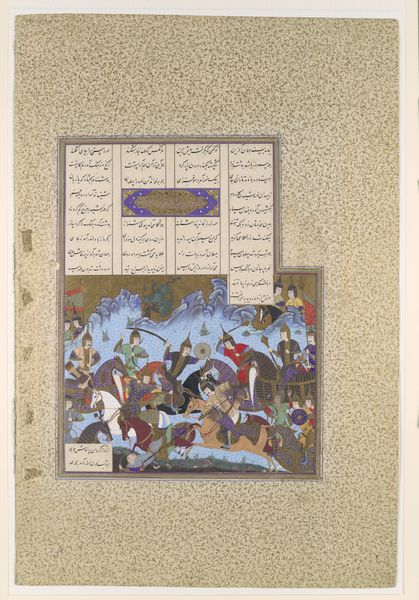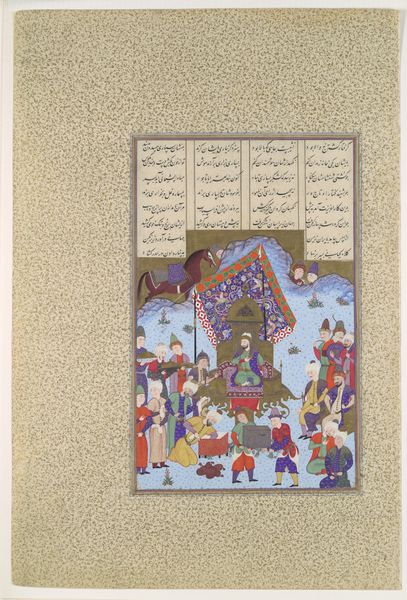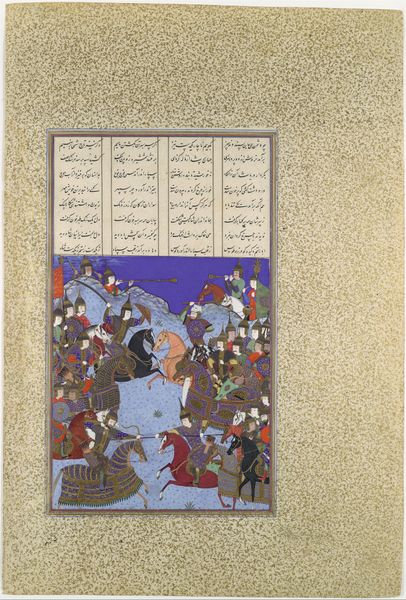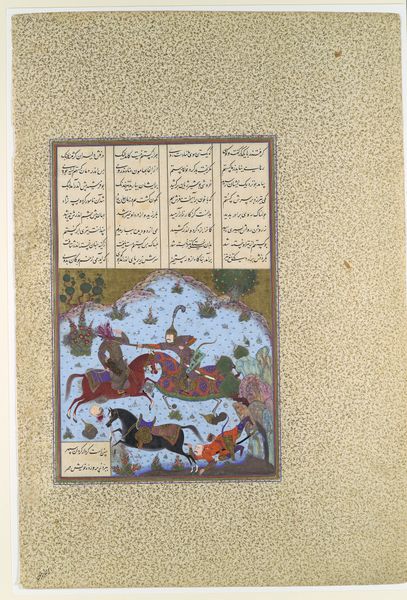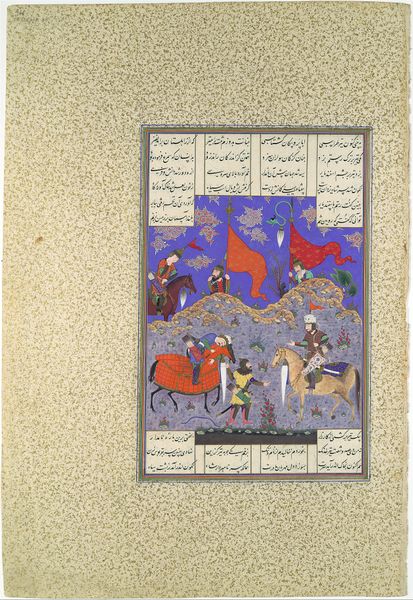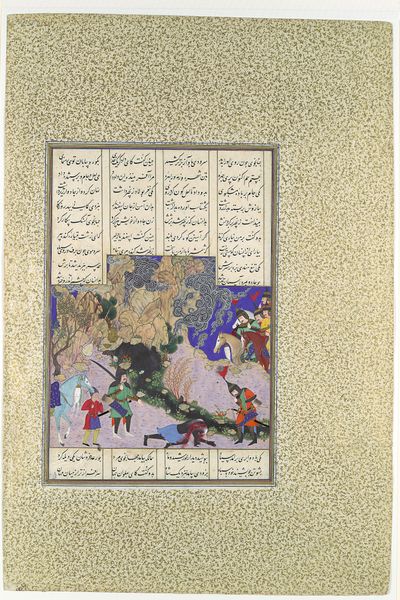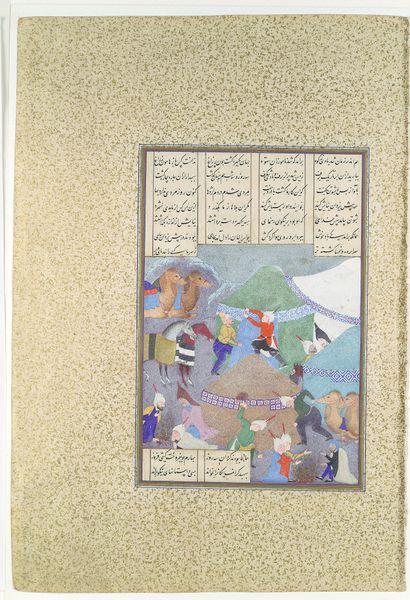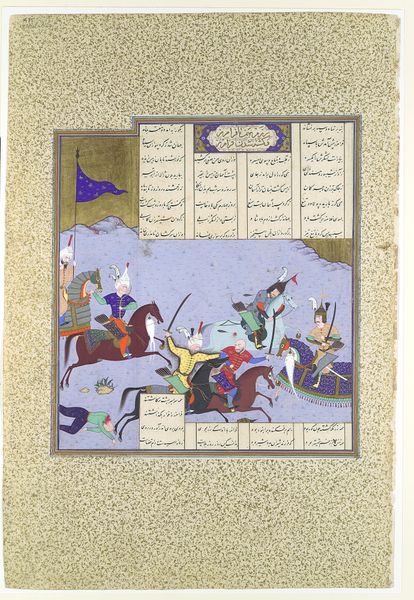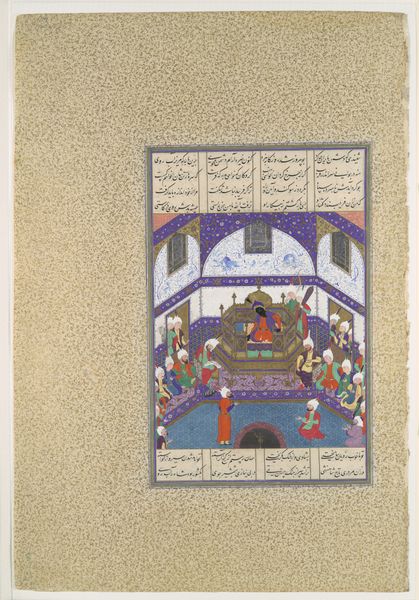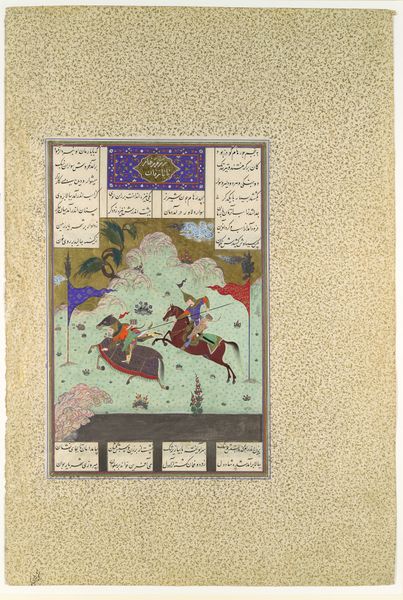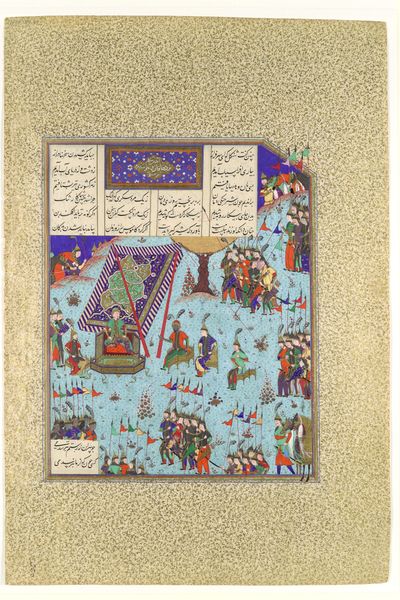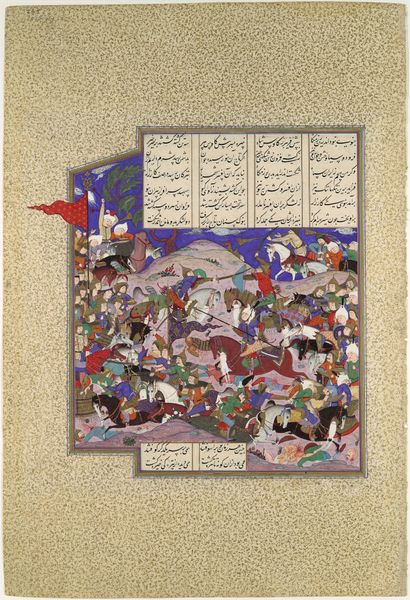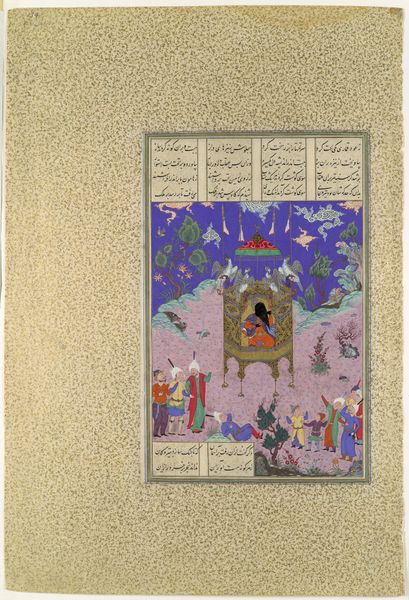
"Rustam Pained Before Kai Kavus", Folio 146r from the Shahnama (Book of Kings) of Shah Tahmasp 1500 - 1555
0:00
0:00
painting, paper, ink
#
portrait
#
water colours
#
narrative-art
#
yellowing background
#
painting
#
traditional media
#
paper
#
ink
#
geometric
#
soldier
#
men
#
islamic-art
#
miniature
Dimensions: Painting: H. 11 3/16 in. (28.4 cm) W. 7 9/16 in. (19.2 cm) Entire Page: H. 18 9/16 in. (47.1 cm) W. 12 1/2 in. (31.8 cm)
Copyright: Public Domain
Curator: Here we see a page from the Shahnama, the Book of Kings, painted between 1500 and 1555. Specifically, this is Folio 146r, and it's called "Rustam Pained Before Kai Kavus." Editor: It strikes me as a moment of restrained drama. The composition is quite interesting, with the text above taking up about a third of the frame. The use of color feels delicate, almost muted in a way that belies the intensity of the narrative I suspect is unfolding. Curator: Indeed. This work, now at The Metropolitan Museum of Art, uses ink and watercolors on paper to depict a powerful scene. Notice the central figure, Kai Kavus, seated under an ornate canopy, while the hero Rustam appears before him, seemingly in distress, judging from the work’s title. Editor: The geometric patterns within the canopy and even in the borders feel like attempts at structure, at containing the emotions on display. Even the so-called yellowing background appears like a field on which these figures act. Does this reflect something of the emotional content? Curator: Absolutely. The geometric motifs and other details can carry symbolic weight. Royalty is often linked with complex patterning. The posture and gesture of each figure contribute to the narrative and tell of complex relationships. Kai Kavus seems aloof, removed even. This posture and the presence of armed men are symbolic for royalty. He’s isolated himself through position, perhaps psychologically too. This stance may hint at injustice. Rustam bows before him as if unfairly accused. The visual language gives narrative tension to this pivotal moment. Editor: And there’s a striking contrast in their coloration—the dark figure of Kai Kavus against the lighter figures in the assembly, a sharp divide created through pigment alone. It’s very direct. Curator: That's a compelling observation. The dark pigmentation ascribed to Kai Kavus visually isolates him as the source of distress. Medieval culture frequently attributed symbolism to colour and light. We read narratives from their conscious usage. This would add to that period’s understanding of leadership, moral governance, justice, and social status that would be interpreted to have influenced its impact over many generations to come. Editor: The miniature allows viewers across time to glimpse human emotions in this intimate, stylistic world of symbols. A compelling testament to visual storytelling. Curator: A key contribution, demonstrating how illuminations preserved cultural memory by translating ancient events using visual metaphors that still resonate with audiences.
Comments
No comments
Be the first to comment and join the conversation on the ultimate creative platform.
